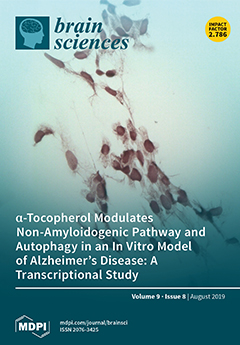Objective: The purpose of this systematic review is to quantitatively estimate (or invest) the impacts of sports-related concussions (SRCs) on cognitive performance among retired athletes more than 10 years after retirement.
Methods: Six databases including (MEDLINE, Scopus, Web of Science, SPORTDiscus, CINAHL, and
[...] Read more.
Objective: The purpose of this systematic review is to quantitatively estimate (or invest) the impacts of sports-related concussions (SRCs) on cognitive performance among retired athletes more than 10 years after retirement.
Methods: Six databases including (MEDLINE, Scopus, Web of Science, SPORTDiscus, CINAHL, and PsycArtilces) were employed to retrieve the related studies. Studies that evaluate the association between cognitive function and the SRC of retired athletes sustaining more than 10 years were included.
Results: A total of 11 studies that included 792 participants (534 retired athletes with SRC) were identified. The results indicated that the retired athletes with SRCs, compared to the non-concussion group, had significant cognitive deficits in verbal memory (SMD = −0.29, 95% CI −0.59 to −0.02, I
2 = 52.8%), delayed recall (SMD = −0.30, 95% CI –0.46 to 0.07, I
2 = 27.9%), and attention (SMD = −0.33, 95% CI −0.59 to −0.06, I
2 = 0%). Additionally, meta-regression demonstrated that the period of time between testing and the last concussion is significantly associated with reduced verbal memory (
β = −0.03681,
p = 0.03), and increasing age is significantly associated with the verbal memory (
β = −0.03767,
p = 0.01), immediate recall (
β = −0.08684,
p = 0.02), and delay recall (
β = −0.07432,
p = 0.02).
Conclusion: The retired athletes who suffered from SRCs during their playing career had declined cognitive performance in partial domains (immediate recall, visuospatial ability, and reaction time) later in life.
Full article






